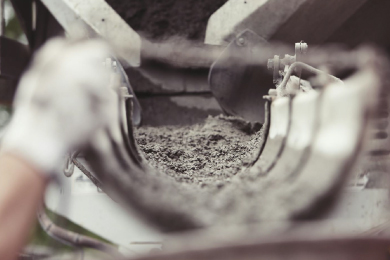As the construction and property industries recognise that sustainability in building design and use is now a critical measure of reputation and responsibility, the tenancy arrangements for non-domestic buildings in particular are changing – and tenants and landlords alike need to know about them.
Enter the green lease - an agreement that, in addition to the standard lease clauses, includes sustainability-specific provisions aimed at both landlords and tenants, in an effort to improve the environmental performance of the leased premises.
It’s a valid step forward in changing expectations around buildings’ sustainability, for sure, but the question is this: how much of an obligation is the green lease, and how does your behaviour as a landlord or tenant of a commercial building have to change as a result – if at all?
A gentlemen’s agreement – nothing more?
It’s important to be realistic here; the green lease is not a requirement in law. It is, instead, an initiative being developed by the Better Buildings Partnership (BBP), a not-for-profit collaboration between leading property owners.
In terms of adoption and uptake, two scenarios are possible here. Firstly, landlords who choose to implement a green lease may decline tenants who do not accept it.
But a more likely scenario is that, because it’s a purely voluntary arrangement, landlords may shy away from imposing it if they think it will scare tenants off because of the costs and management overheads inevitably associated with more sustainable occupancy behaviours.
And green leases’ legal force is also debatable, or at least highly variable.Law sources tell us that a green lease can, in its ‘lightest’ form, simply be a statement of similar environmental values between landlord and tenant, with no binding actions prescribed.
On this basis, should any of us be taking any special notice of it?
Contract, compliance, comprehensiveness
In a word, yes – because at the other end of the spectrum, a green lease can have significant legal force.
This is down to two things. Firstly, a tenancy agreement is a form of contract, and so the green lease provisions can, if landlord and tenant are in agreement, bind both parties to very specific sustainability obligations on that legal basis.
And these can be extensive. A thorough green lease is likely to include specific and measurable obligations around energy efficiency and renewability, water use, waste reduction and increased recycling, sustainable choices of building materials for works, repairs, and alterations, and the sharing of consumption and environmental performance data.
But secondly – and arguably more importantly – some of the most common clauses in green lease agreements reinforce existing statutory environmental compliance standards around energy performance certificates (EPCs), Minimum EnergyEfficiency Standards (MEES), and Building Research Establishment EnvironmentalAssessment Method (BREAM).
So although the green lease may be a nicety at one end of the scale, it dovetails comprehensively with legislation at the other, and adds an additional layer of enforcement potential to it.
Put this together with the fact that green leases offer a compelling new way for both landlords and their tenant to demonstrating their sustainability credentials – an area of increasing focus for investors, partners, customers, and the public – and this is looking more and more like an initiative that comes armed with both carrot and stick.
Making the green lease work for you
If you’re a commercial landlord or tenant, then, it makes a lot of sense to get ahead of the game and consider what actions you’d need to take to enable you to meet the terms of a green lease.
And as energy efficiency and water use are likely to play such a significant part in evolving green lease drafting, it makes sense to focus on these post-haste.
Added urgency comes from the fact that all non-domestic properties can now only be let if they have an EPC of E and above, and this requirement is probably only going to get stricter. The Government proposes to upgrade the minimum standard to C or higher for any new lettings in2025, and for all continuing tenancies from 2028.
At GBD, we’ve helped many landlords, building managers, and tenant businesses significantly reduce their energy and water use through scientific energy efficiency modelling, EPC energy feasibility reports, and by smart use of energy-saving innovations like heat pumps, photovoltaic (PV) solar panels, LED lighting, ventilation with heat recovery, and more besides.
There’ll be an update on our EPC energy feasibility reports in our next article– in the meantime, take a look at how we’ve helped others get ahead of the sustainability curve on our projects page.
Get in touch to find out how we can help turn your green lease obligations into enhanced environmental credentials and reputation, and energy cost savings.





.png)




